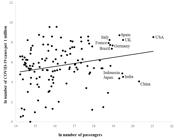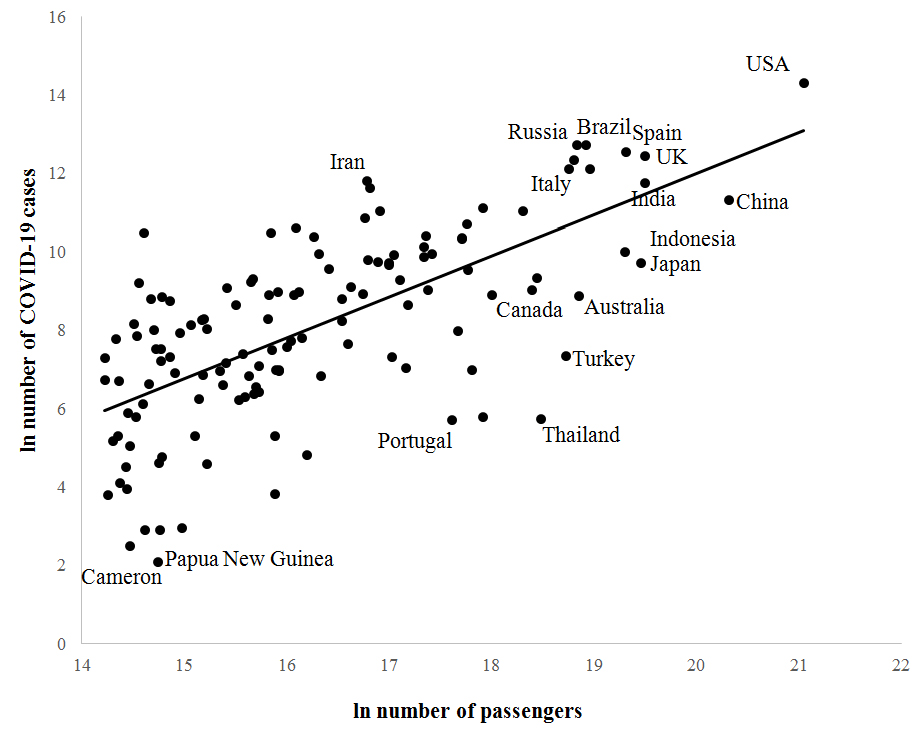Abstract
The spread of SARS-CoV-2 and the distribution of cases worldwide followed no clear biogeographic, climatic, or cultural trend. Conversely, the internationally busiest cities in all countries tended to be the hardest hit, suggesting a basic, mathematically neutral pattern of the new coronavirus early dissemination. We tested whether the number of flight passengers per time and the number of international frontiers could explain the number of cases of COVID-19 worldwide by a stepwise regression. Analysis were taken by 22 May 2020, a period when one would claim that early patterns of the pandemic establishment were still detectable, despite of community transmission in various places. The number of passengers arriving in a country and the number of international borders explained significantly 49% of the variance in the distribution of the number of cases of COVID-19, and number of passengers explained significantly 14.2% of data variance for cases per million inhabitants. Ecological neutral theory may explain a considerable part of the early distribution of SARS-CoV-2 and should be taken into consideration to define preventive international actions before a next pandemic.
Key words
SARS-CoV-2; virus dissemination; emergent diseases; air transportation

 Thumbnail
Thumbnail
 Thumbnail
Thumbnail

